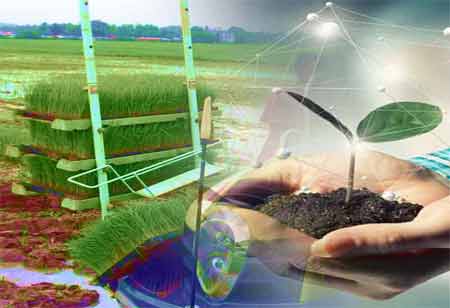Thank you for Subscribing to Agri Business Review Weekly Brief
Developing a Reliable IoT Connectivity for Sustainable Agriculture
It's crucial to feed a growing population responsibly, and agriculture is at the heart of that endeavor. However, agriculture needs connectivity for this to happen.

By
Agri Business Review | Friday, June 02, 2023
Stay ahead of the industry with exclusive feature stories on the top companies, expert insights and the latest news delivered straight to your inbox. Subscribe today.
It's crucial to feed a growing population responsibly, and agriculture is at the heart of that endeavor. However, agriculture needs connectivity for this to happen. The solution lies in digitization and the transition to agriculture 4.0. Digital twins, AI, and other advancing technology will be used more and more by farmers worldwide to streamline operations, boost yields, and enhance the welfare of cattle.
Fremont, CA: It's crucial to feed a growing population responsibly, and agriculture is at the heart of that endeavor. However, agriculture needs connectivity for this to happen. The solution lies in digitization and the transition to agriculture 4.0. Digital twins, AI, and other advancing technology will be used more and more by farmers worldwide to streamline operations, boost yields, and enhance the welfare of cattle. These solutions are driven by industrial IoT (IIoT), which collects pertinent data.
However, downtime is detrimental when digital technologies are essential to operations and data generated by IIoT becomes mission-critical. Resilient and dependable connections ensure data flows regardless of the environment or location.
Opportunities for New Technologies
When IIoT is implemented on agricultural sites, it may be used to remotely manage water usage, check equipment health, monitor grain silo and fuel tank levels, automatically gather and report on environmental factors, and much more. However, given the size of some locations, implementing these technologies can be challenging because the infrastructure for connectivity and power is either sparse or nonexistent, but agriculture still requires connectivity.
What is the process?
Supporting this digitization and providing agriculture with the connectivity it needs requires using a hybrid communications technology that uses terrestrial and space networks. Hybrid communications solutions may connect IIoT devices to the cloud through cellular and various satellite backhaul. Some of them can even switch automatically based on what is available.
The end product is a robust drop-in communications network that functions despite outdated infrastructure or adverse weather. By utilizing technology with superior power management and flexible powering capabilities, it is also possible to transform any location on Earth into a digital hub without being connected to the grid.
Actual World Effects
Consider the importance of grain silo monitoring and how much it may benefit farmers. Farmers can gain more knowledge and have fewer supply surprises by setting low stock alarms, remotely monitoring levels, and understanding elements like temperature to ensure grain isn't harmed. Regardless of connectivity and power infrastructure, a hybrid communications platform can connect IIoT devices installed in silos to be monitored remotely.
Any industry that does not use digital technologies loses chances to increase productivity and cut waste. Since agriculture requires connectivity, digital technology can help us better use our land and feed a growing population without harming the environment.





